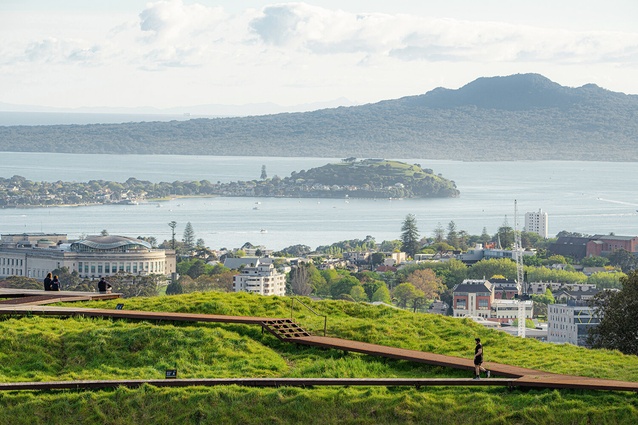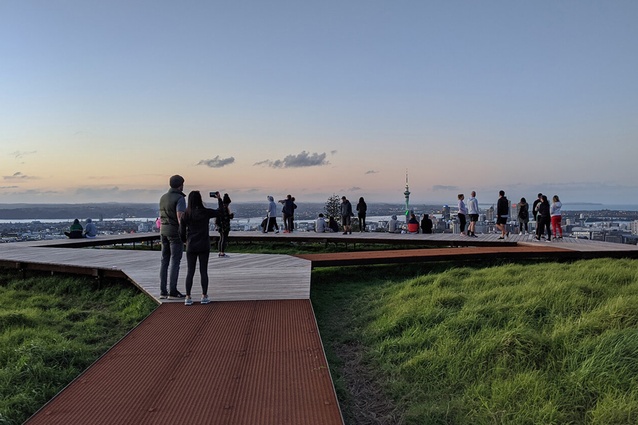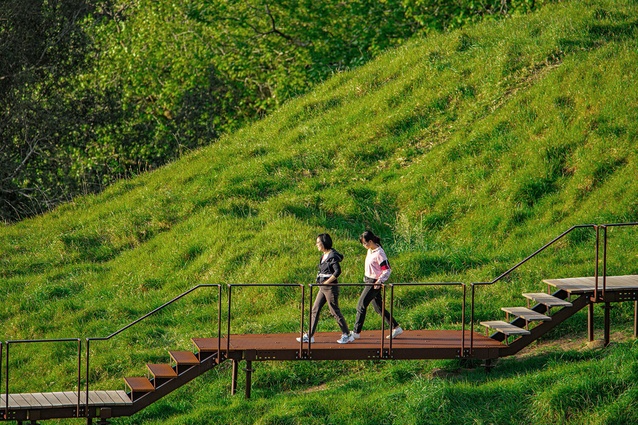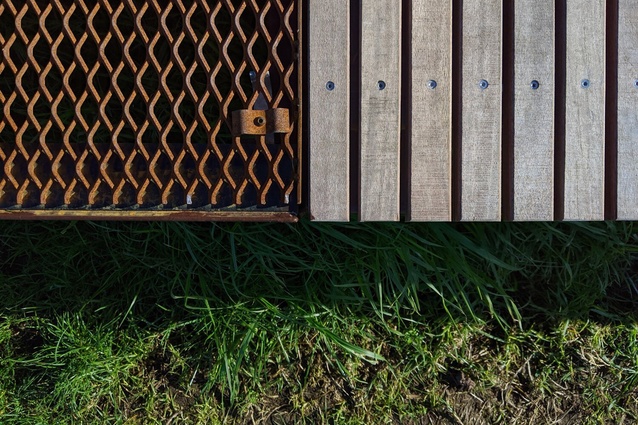The Maungawhau/Mt Eden boardwalk
Integrated design firm Isthmus explores the evolution of the new walkway atop Maungawhau/Mt Eden.
The volcanic scoria cone of Maungawhau/Mount Eden is waahi tapu – a sacred place of immense historical, cultural and spiritual significance to the Mana Whenua iwi/hapū of Tāmaki Makaurau.
Inhabited since 1200AD the iconic pā site (defensive settlement) needed to accommodate the growing pressures of tourism whilst repairing eroded tracks, geological features and restoring the culture and mana of the maunga.
The sensitive design response treads lightly on the land, elevating visitors on a structure that floats above the maunga itself and restoring the mauri and wairua of this special site.
In 2018 the Tūpuna Maunga Authority (TMA), a co-governance statutory authority between Ngā Mana Whenua o Tāmaki Makaurau and Auckland Council, commissioned consultancy Stellar Projects and Isthmus to deliver a world-class boardwalk experience on the ancestral volcanic crater of Maungawhau. Stage One which stretches around the crater from the lower tihi (summit) to the upper tihi is the first piece of this work to be completed.
Lead designer, Nada Stanish from Isthmus says: “The maunga was to remain the main feature on the hikoi to the tihi. It was an opportunity to be minimal with materiality and reduce the footprint of its structure as much as possible.

“Sections of boardwalk are kept narrow, changes in direction and angle respond to subtle earthworks on the ground. Platform landings reflect adjacent terraces, the handrail is light and disappears from different perspectives—all of this was very intentional.
“It was an archaeologically, geologically, culturally complex site. The whole team rose to the challenge and where there is great collaborative effort there is a great outcome, everyone wins. Through design and build, every decision was made with full consideration of the significance of the site.”
As part of the extensive planning for the project the team reviewed precedents from other World Heritage sites that had dealt with similar challenges. It then worked with the Tūpuna Maunga Authority and other specialists to develop an innovative steel-framed boardwalk system with a minimal, removable footprint that would protect and respect the cultural values and archaeological and geological features. The systemised design integrates an engineering methodology with an architectural approach to materiality to create a restrained ‘kit of parts’.
Working closely with the Tūpuna Maunga Authority Isthmus then applied the design system to the site contours and detailed a low impact structure in place of the previous track. The intent was to concentrate and contain visitors upon the boardwalk and let the land below them rest and heal (the previous aggregate track had become a network of uneven surfaces and deep ruts highly prone to erosion – in places the path had grown to a width of over six meters, scarring the ancestral mountain).

Minimal disturbance to the tūpuna maunga during the boardwalk’s construction was achieved with foundation screwed into the ground by hand, meaning no digging was required (importantly, this technique is also reversible—the foundations can be removed in the future leaving no trace). HEB Construction, the main contractors, carried materials by hand to locations onsite to ensure the lowest impact on the sacred mountain. All materials were selected are able to be fully recycled at the end of their life.
The result of Stage 1 is a major achievement that demonstrates the unity of all involved around a shared vision. Stage Two will include narrowing of the upper tihi, pedestrianising of the access road, and reducing the carpark to a drop off zone. Once completed a series of viewing platforms will be strategically placed enroute to capture the expansive views and float over the earthworked terraces of the maunga.
Maungawhau and the other Tūpuna Maunga (ancestral mountains) of Tāmaki Makaurau are on a tentative list for UNESCO World Heritage status. A major part of a World Heritage bid is demonstrating that the unique heritage values are being properly protected; this sensitive design response does just that by subtly blending built form into the volcanic crater rim a physical connection to our inherent relationship with tangata and whenua.
This article was first published on the Landscape Architecture Aotearoa website, which is published by the New Zealand Institute of Landscape Architects (NZILA).













